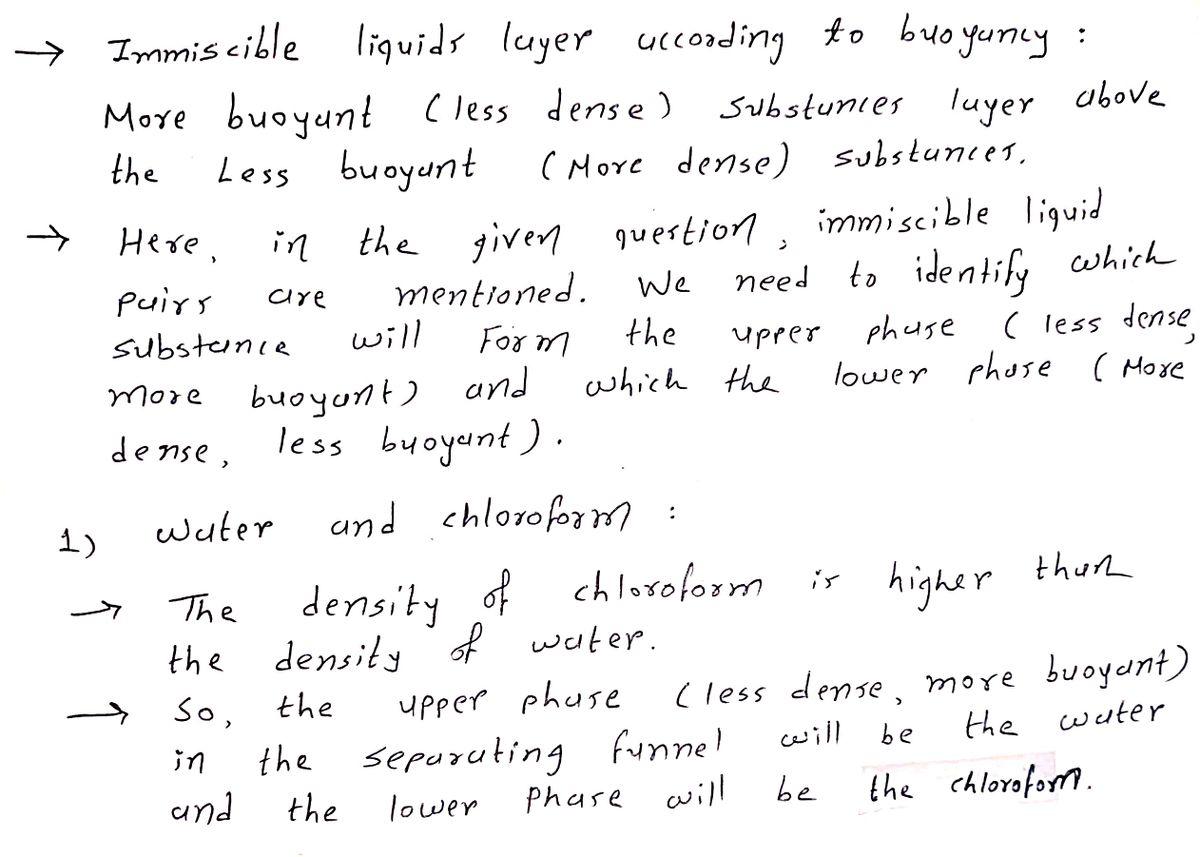immiscible liquids layer according to buoyancy: more buoyant (less dense) substances layer above less buoyant substances (more dense). for the following pairs, tell which substance will form the upper (less dense, more buoyant) phase, and which the lower phase. water and chloroform diethyl ether and water dichloromethane and water ethanol and hexane
States of Matter
The substance that constitutes everything in the universe is known as matter. Matter comprises atoms which in turn are composed of electrons, protons, and neutrons. Different atoms combine together to give rise to molecules that act as a foundation for all kinds of substances. There are five states of matter based on their energies of attraction, namely solid, liquid, gases, plasma, and BEC (Bose-Einstein condensates).
Chemical Reactions and Equations
When a chemical species is transformed into another chemical species it is said to have undergone a chemical reaction. It consists of breaking existing bonds and forming new bonds by changing the position of electrons. These reactions are best explained using a chemical equation.
immiscible liquids layer according to buoyancy: more buoyant (less dense) substances layer above
less buoyant substances (more dense). for the following pairs, tell which substance will form the upper
(less dense, more buoyant) phase, and which the lower phase.
water and chloroform
diethyl ether and water
dichloromethane and water
ethanol and hexane

Step by step
Solved in 3 steps with 3 images









